Call Us
+86 136 6007 9809
Call Us
+86 136 6007 9809
Jul. 27, 2022
Fasteners for sheet metal and plastic offer a simple solution even for single-sided installation. Blind rivet nuts and studs are part of our product portfolio. Need to install load-bearing solid threads in thin materials? A reliable rivet nut may be the answer. Available in round, hex, and square body styles, our rivet nuts feature a variety of options and locking features.
Setting:
We recommend that you use the spin-pull-spin setting technique. With this technique, the blind nut or stud is threaded (spun) onto the mandrel, inserted into the hole, and then pulled back (without rotation) to upset the rivet nut body. Finally, the mandrel is spun out.
Our range of setting tools can be found in the catalog or website tools series, Which is very useful for components with varying thicknesses (guarantees consistent setting). Important: Setting several simultaneously can be done using a press. However, we advise you to contact us in advance about this. We would not recommend using mechanical screwdrivers or spanners for blind riveting as they can damage the surface of the thread and thus have a detrimental effect on your connection. We recommend that you carry out a trial assembly before starting series production.
Do you already have something specific in mind?
Need Help Finding the Right Solution?
Let our experts provide recommendations for your project or application.
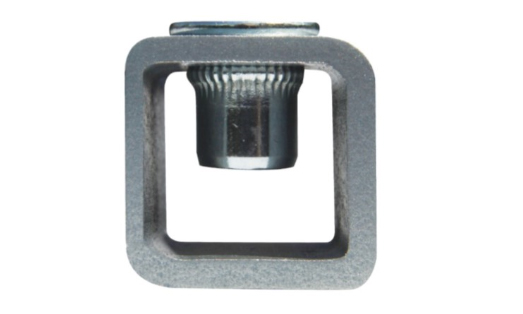
Blind rivets, nuts, and studs are the most versatile solution for adding a load-carrying internal or external thread to thin-walled workpieces. They can be installed into plastic or even ceramic components and all metals. The blind, i.e., one-sided setting technique, means that J-X blind rivet nuts and studs are often the only fastener solution for hollow sections, housings, or where access is limited to one side of a component.No additional finishing is required after setting, even with coated or painted components. Thus, blind rivet nuts and studs can be fitted at any stage in the production process, making their use extremely flexible. Unlike welded captive nuts, J-X blind rivet nuts and studs do not subject the components to the damaging effects of high temperatures. The installer is safe as no fumes or gasses are produced, and there is no fire risk. The short time it takes to set J-X and their low installation costs mean that J-X blind rivet nuts and rivet studs have clear economic advantages compared with all other fasteners: Cumbersome presses or pliers are not required.
J-X blind rivet nuts and studs connections can be safely made and remade without performance loss. For manufacturers who wish to supply components with fitted threaded connections, J-X blind rivet nuts and studs offer advantages without risks.
| Head The part of the blind rivet nut is in contact with the top surface of the workpiece. Body The part of the blind rivet nut below the head. | 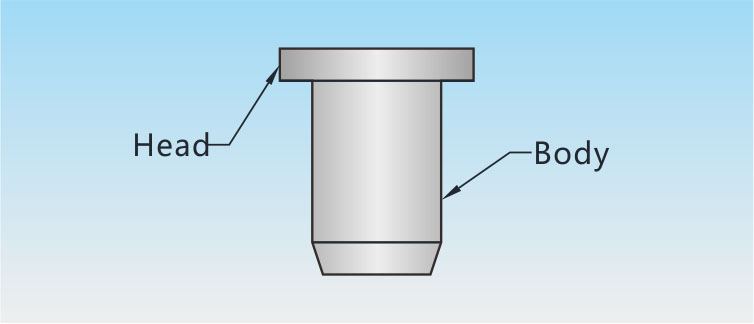 |
| Clamp thickness The total thickness of the material comprises layers from one or more workpieces into which the blind rivet nut is installed. Grip range The thickness of the material must be between the minimum and the maximum values for which the blind rivet nut was designed (the grip range). | 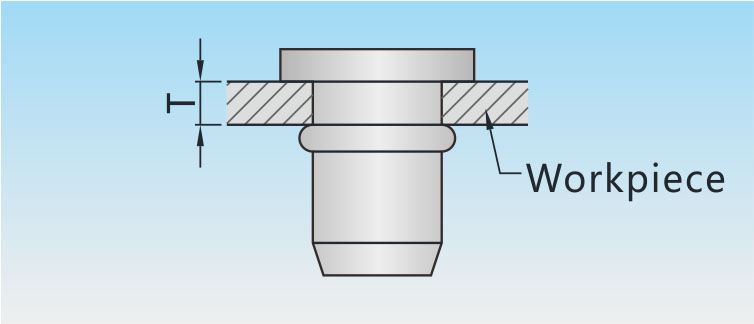 |
| Hole dimensions Given as diameter d for cylindrical holes and the across the flats dimension h for hexagonal holes | 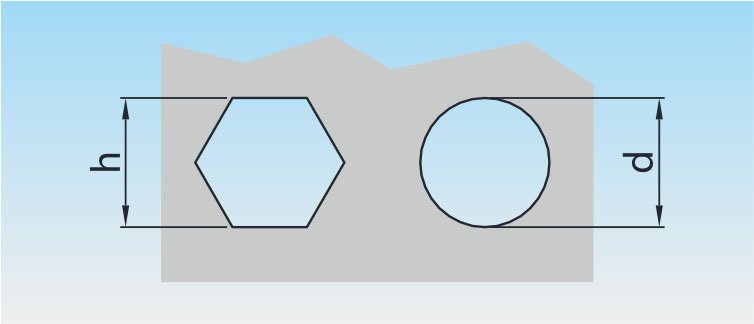 |
| Blind rivet nut materials blind rivet nuts are manufactured from steel, stainless steel, or aluminum. Our materials have good deformability properties and high resistance to turning in the upset area. Standard stainless steel blind rivet nuts and studs are made from A1 or A2 austenitic steel containing 18 % chromium and 10 % nickel. Each material has its advantages: Steel = is suitable for general use. Aluminum = low weight, corrosion-resistant Stainless steel = resistant to corrosion and temperature. | 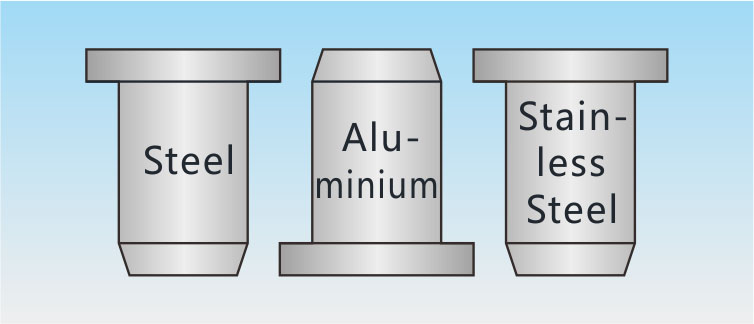 |
| Mandrel and nosepiece Mandrel: The threaded stud on which the blind rivet nut is wholly threaded. Nosepiece: The part of the setting tool that is in contact with the blind rivet nut head during the setting process. | 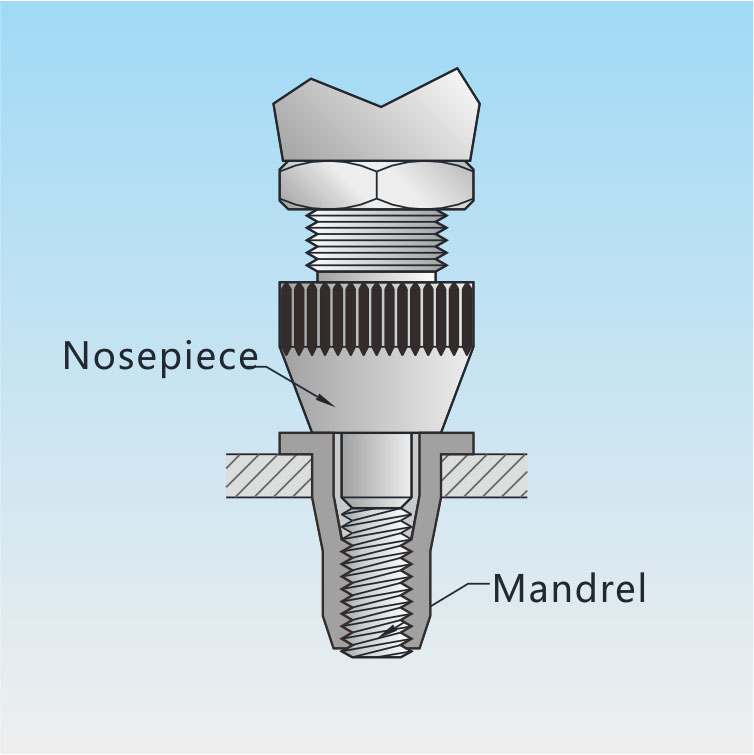 |
| Flathead This versatile head type is the one most commonly used in the industry. The arrow and V should point at the line between B and A, not at the gap created by deep drawing. The idea is to demonstrate that the gap between B and A can be reduced to zero by deep-drawing. | 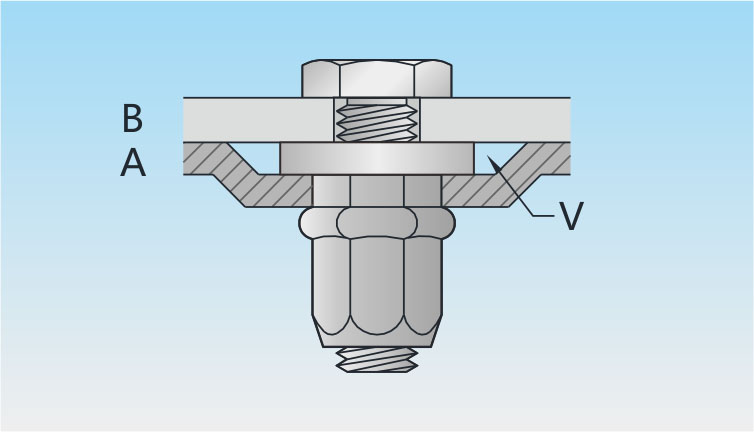 |
| Extra-small countersunk head This head type is used where the gap V is required to be small or zero. V can be reduced to zero by using a collar to punch a slight depression in the parent material A by a slight countersinking of A. With malleable material, the gap V is automatically eliminated. | 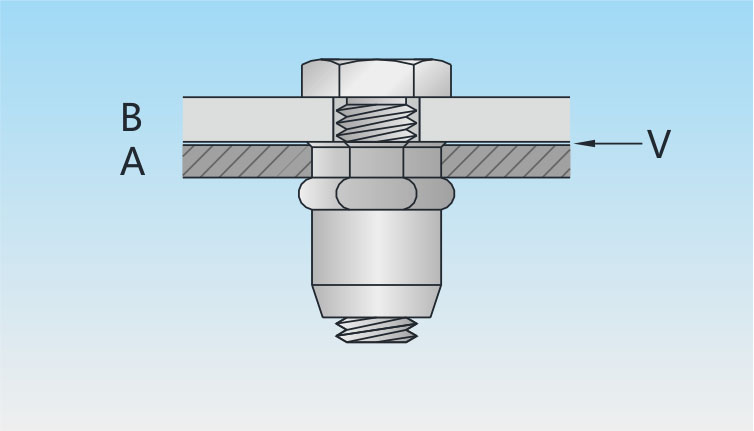 |
| Extra-small countersunk heads are an improved alternative to countersunk heads as they do not require the hole to be countersunk. However, they should not be used if: the hole is out of tolerance, the parent material is malleable (as this could cause the head to pull through), and the screw exerts a lateral moment on the blind rivet nut. Blind rivet nuts with extra-small countersunk heads are installed using setting tools with standard nosepieces. | 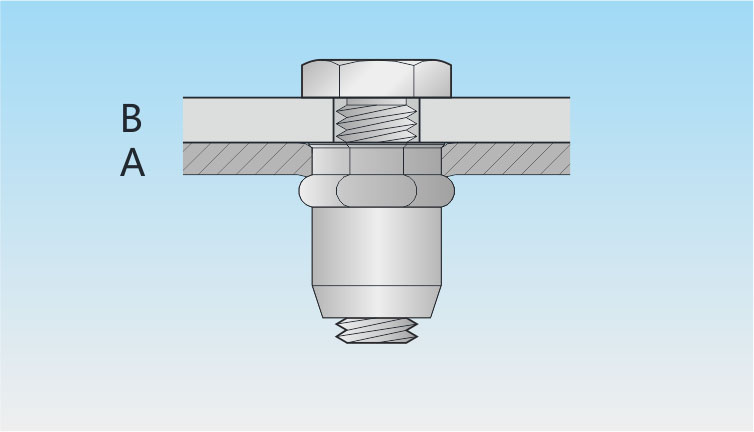 |
| Countersunk head Countersunk heads generally require countersinking of the parent material. Therefore, a countersunk head is used where the gap V is needed to be negligible, but an extra-small countersunk head can not be used. We recommend that the countersinking (f) is made slightly shallower than the countersunk head so that the head projects slightly beyond the surface of the supporting part A and thus make as much contact as possible with the attached part B (V > 0) (detailed information on dimension (f) can be found on pages 94and 104). | 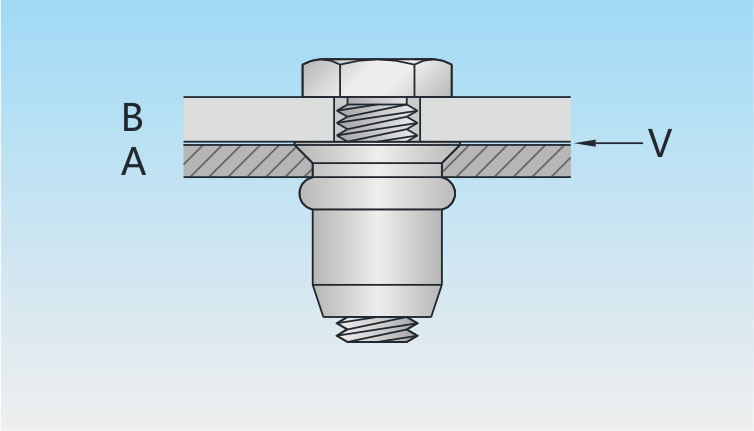 |
Surface treatment: steel blind rivet nuts and studs are zinc-plated. The standard supplied surface treatment is 8μ zinc plated, yellow passivated, ROHS blue-white zinc. Other surface treatments are available on request for different corrosion resistance requirements.
Selecting the material: Standard is supplied in steel, aluminum, and stainless steel. The choice of material depends on the strength of the blind rivet nut and stud (see table page 89) and the required corrosion resistance of the completed end product. Our standard products manufactured from stainless steel are suitable for use in some catering and food processing industries. We would be pleased to provide further information on stainless steel or brass blind rivet nuts or corrosion resistance.
Advice for optimum assembly: For the installation of large numbers of, and in particular when using stainless steel components, to obtain the best connection every time, we recommend that the mandrel is lubricated before installation starts and after that at regular intervals
Previous: Pull methods
Contact Us
Tel.:
+86 020 8621 0320
+86 020 3121 6067
Technical Support:
Navigation
SEND INQUIREY